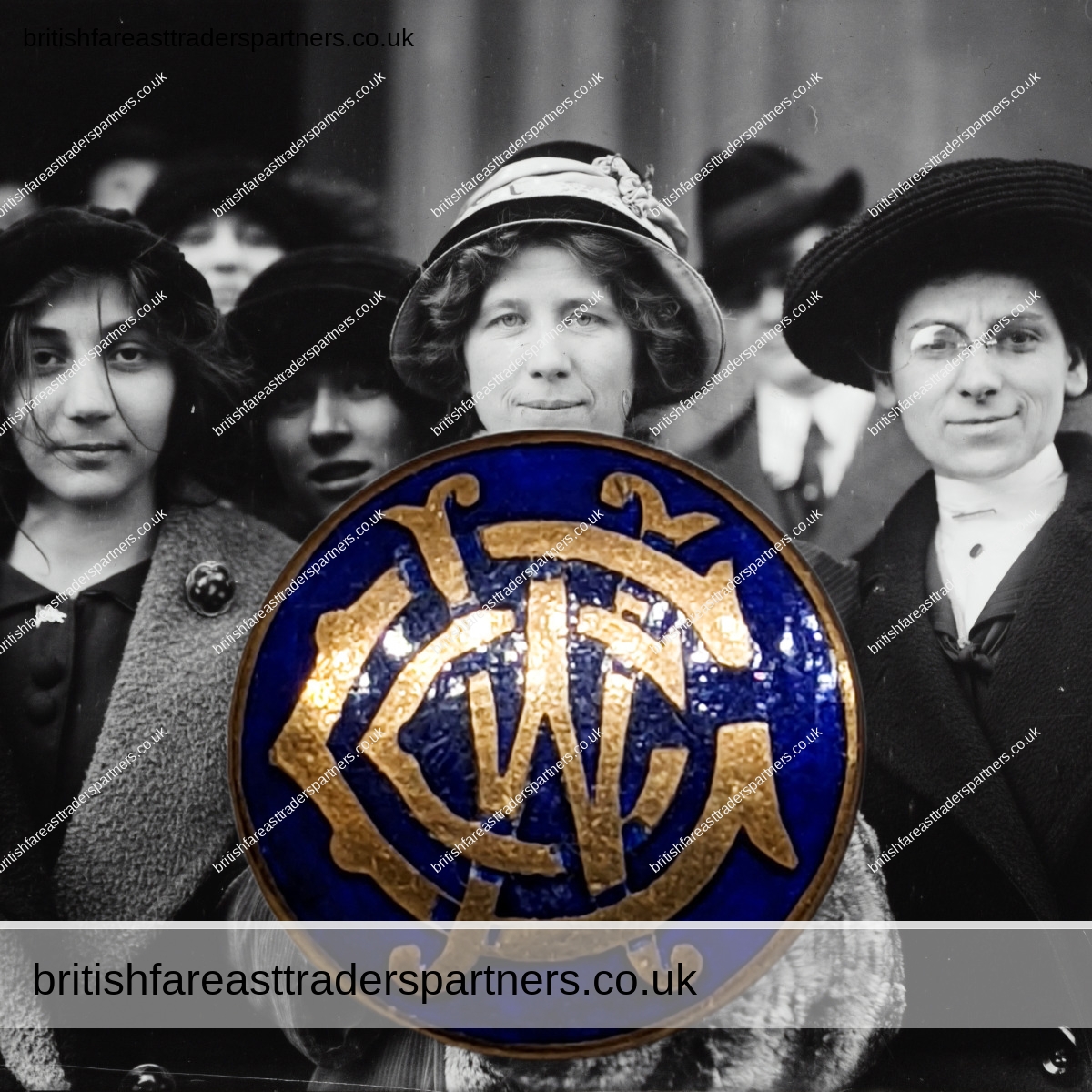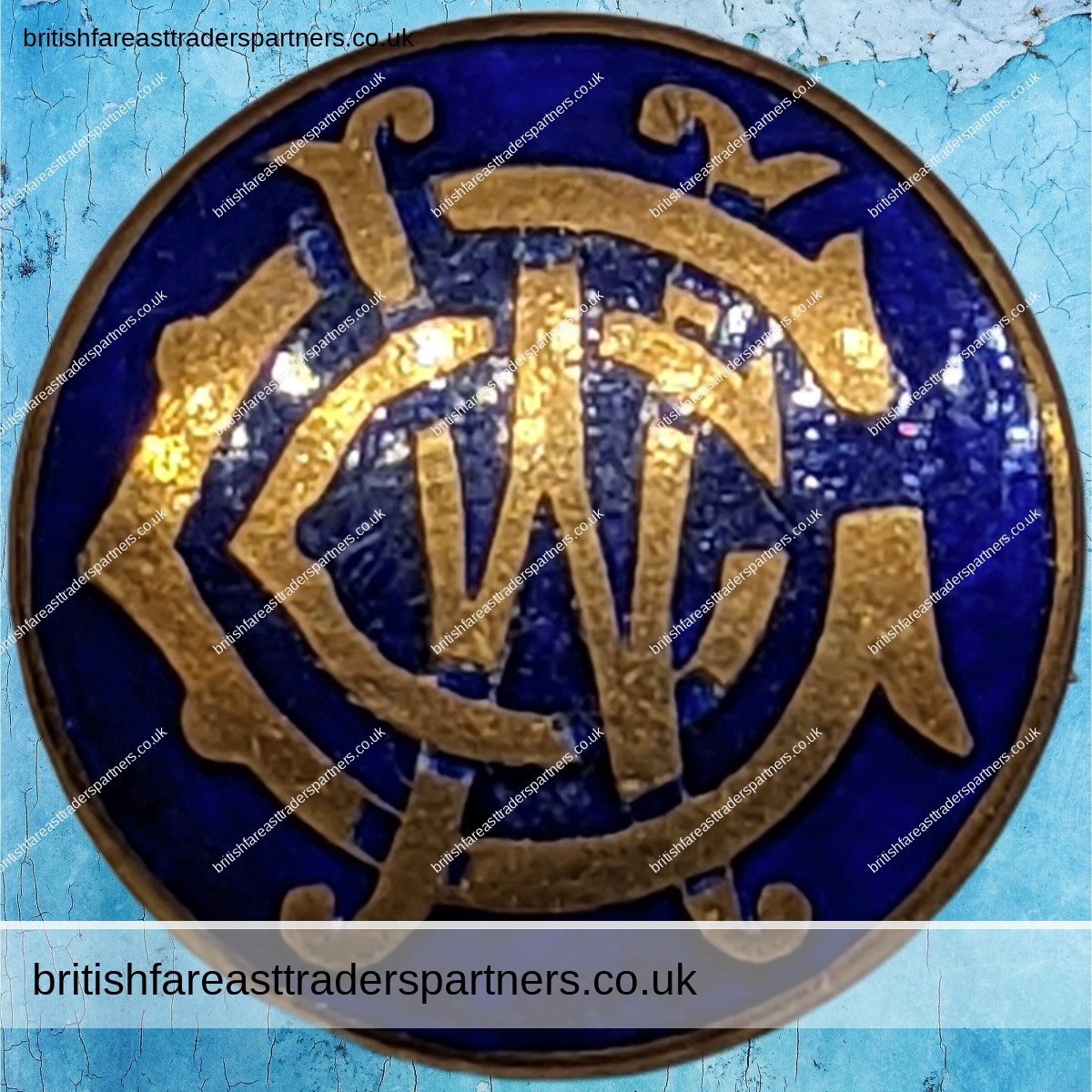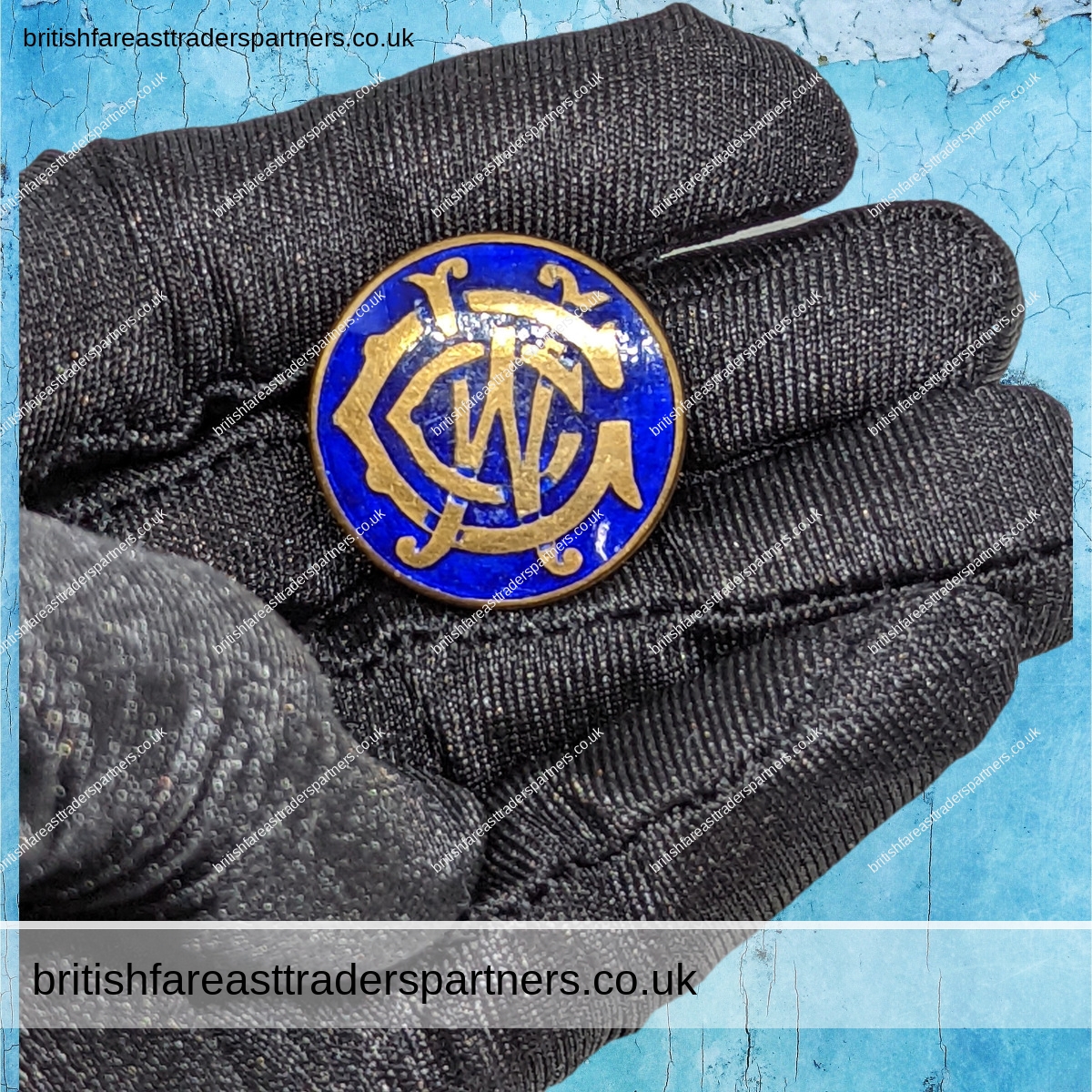Last Updated on: 18th August 2022, 07:36 pm

ANTIQUE 1920s 1930s WOMEN’S CO-OPERATIVE GUILD (WCG) COLLECTABLE ENAMEL BADGE
- britishfareasttraderspartners_admin
- ACCESORIES, ADVERTISING, ANTIQUE, BRITISH, CLUBS / ORGANISATIONS, COLLECTABLES / COLLECTIBLES, CULTURE, ENGLAND, HERITAGE, HISTORY, HOBBIES / PASTIMES, PINS / BADGES, UNITED KINGDOM, VINTAGE
- Antiques, British, CO-OPERATIVE WHOLESALE SOCIETY (CWS), Collectables / Collectibles, Enamel, Heritage, History, Lifestyle and culture, PIN BADGE, United Kingdom, Vintage, WOMEN'S CO-OPERATIVE GUILD (WCG)
VINTAGE WCG COLLECTABLE ENAMEL PIN BADGE
WOMEN’S CO-OPERATIVE GUILD (WCG)
CO-OPERATIVE WHOLESALE SOCIETY (CWS)
GUILDS / SOCIETIES | WOMEN |
HISTORY | HERITAGE |
VINTAGE & ANTIQUES | COLLECTABLES |
BRITISH | UNITED KINGDOM
DETAILS:
MEASUREMENTS:
Approx. 1 inch in diameter
WEIGHT: Approx. 4 g
MAKER’S MARKS:
C.W.S
DESIGN/ STYLE NOTES:
ANTIQUE GILT & BLUE ENAMEL PIN BADGE
BACKGROUND INFORMATION:
History
The guild was founded in 1883 by Alice Acland,
who edited the “Women’s Corner” of the Co-operative News,
and Mary Lawrenson,
a teacher who suggested the creation of an organization
to promote instructional and recreational classes for mothers and girls.
Acland began organizing a Women’s League for the Spread of Co-operation
which held its first formal meeting of 50 women
at the 1883 Co-operative Congress in Edinburgh
and established local branches.
It began as an organization dedicated to spreading the co-operative movement,
but soon expanded beyond the retail-based focus of the movement
to organizing political campaigns on women’s issues
including health and suffrage.
Annie Williams,
a suffragette organiser for the Women’s Social and Political Union in Newcastle
found in 1910 that ‘Co-operative women are very keen to know about ‘Votes for Women’.
In 1884 the league changed its name to the Women’s Co-operative Guild
and later to the Co-operative Women’s Guild.
In 1899, Margaret Llewelyn Davies
was elected general secretary of the Guild
and was widely credited with greatly increasing the success of the Guild.
By 1910 it had 32,000 members.
Maternity benefits were included in the National Insurance Act 1911
because of the guild’s pressure.
The guild became more politically active,
and expanded its work beyond the British Isles;
their objectives included the establishment of minimum wages
and maternity benefits,
and in April 1914 they were involved in an International Women’s Congress
at The Hague which passed a resolution totally opposing war:
this Conference is of opinion that the terrible method of war
should never again be used to settle disputes between nations,
and urge that a partnership of nations,
with peace as its object,
should be established and enforced by the people’s will.
After World War I the guild became more involved in peace activism,
concentrating especially on the social and political conditions
that encouraged or gave rise to war,
as well as opposition to the arms trade.
In 1933 they introduced the White Poppy
as a pacifist alternative to the British Legion’s annual red poppy appeal.
At this time membership of the guild was at its peak,
with 1,500 branches and 72,000 members.
The guild continued with several local branches,
although it did not have the visibility within the co-operative movement it once did.
It closed after 133 years on 25 June 2016.
SOURCE: WIKIPEDIA
Text is available under the Creative Commons Attribution-ShareAlike License 3.0;
additional terms may apply.

Related posts:
- VINTAGE 24 JULY 1958 CHALLINORS & SHAW SOLICITORS DISTRICT BANK LIMITED LEEK, STAFFORDSHIRE ENGLAND, COLLECTABLE BRITISH BANKNOTES & CHEQUES SCRIPOPHILY | CURRENCY | TENDER | LEGAL VINTAGE 24 JULY 1958 CHALLINORS & SHAW...
- ANTIQUE AMALGAMATED ENGINEERING UNION (AEU) COLLECTABLE ENAMEL BADGE Up for sale is a rare and collectible antique pin...
- DAYS OUT IN UNITED KINGDOM: PLACES OF INTEREST in WEST SUSSEX, ENGLAND: A SERIES OF PHOTOGRAPHIC BLOG: ARUNDEL CASTLE GROUNDS & ARUNDEL CASTLE WATER GARDEN : A WORLD HERITAGE SITE : HERITAGE | ART | HISTORY | TOPOGRAPHY | TOURISM | TRAVEL | ARCHITECTURE | ARISTOCRACY | CULTURE SHOP OUR ONLINE STORE… Click Here SHOP OUR EBAY:...
- Discover Sussex’s Idyllic Villages & Tranquil Churches in South Downs Explore the serene churches and picturesque villages nestled in Sussex's...
- Antique 1895 Interest Statement NIZAM’S Guaranteed State Railways Company Ltd. Explore the 1895 Nizam's Railway Interest Statement: a historical glimpse...
- VINTAGE Handpainted TUNISIA Camel Desert Landscape Red Clay Pottery VASE Get ready to add some vintage charm and artistic flair...
- VINTAGE ADMIRAL USHAKOV 20k GOLD PLATED COLLECTABLE ENAMEL PIN BADGE Looking for a vintage collectable enamel pin badge? Look no...
- VINTAGE MIKHAIL KUTUZOV 20k GOLD PLATED COLLECTABLE ENAMEL PIN BADGE Introducing this stunning and rare vintage enamel pin badge of...
- VINTAGE DARK BLUE Green White RIBBON BAND Ladies’ Women’s BOWLER / DERBY Hat Up for sale is a stunning vintage Dark Blue Bowler/Derby...
- VINTAGE ADMIRAL DMITRY SENYAVIN 20k GOLD PLATED COLLECTABLE ENAMEL PIN BADGE Introducing a stunning collectible enamel pin badge featuring a portrait...



